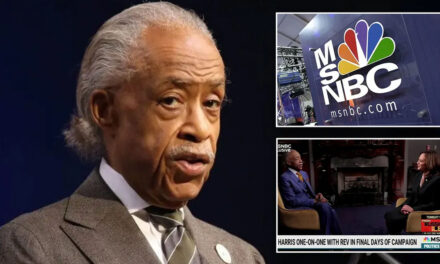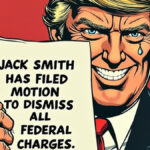
Biden promised to be the union bosses’ man in the White House
In his recent Labor Day meetings with the top AFL-CIO leaders in the nation, former Vice President Joe Biden promised to be the “strongest labor President in history.” That pledge should be enough to make American workers vote for President Trump. Biden has promised to make a small cabal of union leaders the most powerful influence in American politics – even more powerful than the overcharged ragtag radical left that currently steers the Democratic Party.
Let us concede that some one hundred years ago – about the time of the Spanish Flu Pandemic – organized labor played a positive role in pushing back against abusive working conditions imposed by a culture of so-called “robber barons” – who, themselves, were operating outside the principles and concepts of a competitive free-market economy.
Following the Great Depression and World War II, America shifted back to a more competitive business model – one in which the value of workers became part of the management psyche. Employers were offering better wages, benefits and working conditions than unions could hope to achieve by so-called tough negotiations and strikes. The workers were increasingly happy.
As a result of that – and the enormous expansion of the union-free small business community – the need for confrontational unions began to ebb and membership began a long decline. Today, approximately six percent of the private sector workers are members of a union. Conversely, a staggering 94 percent are not. Think about that.
The number of private sector union workers would be even lower if our government was not subsidizing the labor movement – putting the thumb on the scale for the unions. Contrasted to the private sector, approximately 33 percent of government workers are unionized. It is the only arena in which the number and percentage of union workers is expanding,
Why the difference?
There are two reasons – enormous campaign contributions to elected officials (overwhelmingly to the Democratic Party) and a natural alliance to the bureaucratic class (the political establishment) which is the backbone of the big-government authoritarian progressive movement in America.
Despite their ebbing influence in the workplace – and thanks to the patronage of the Democratic Party and the bureaucratic community — organized labor has been able to exert influence far beyond its proportionate place in the working community. In terms of their numbers and percentage of the workforce, they are otherwise a marginal interest group.
The money is one big reason. In the 2019-2020 campaign cycle unions have already invested heavily. The largest contributions to the Democratic Party, partisan Political Action Committees and Democrat independent expenditure campaigns came from the Carpenters’ Union. Of the $19.3 million donated, less than $500,000 went to Republicans.
First place would have – and should have — gone to the powerful education industry, but their contribution is divided between the National Education Association (NEA) and the American Federation of Teachers (AFT). Combined they donated $26.4 million — $12.9 million and $12.5 million respectively– with a mere $90,275 going to GOP candidates and organizations
The government unions spend big money to keep those progressive legislators taking more and more money from taxpayers to give the bureaucracy more people, extraordinarily great benefits, more regulatory power and greater job protection. The American Federation of State, County and Municipal Employees (AFSCME) has so far contributed $10.3 million dollars with not a cent to the GOP. The much smaller American Federation of Government Employees (AFGE) contributed another $1.6 million this season, with a paltry $36,088 to Republicans.
Among the special treatments that give unions proportionately greater access and influence is their ability to use union dues to direct money to candidates that the members may oppose. While the money essentially all goes to Democrats and Democrat support groups, the partisan political demographics of union membership reflects a much higher proportion of Republican voters
Another unfair advantage enjoyed by unions is the exclusive right to government contracts. Virtually every vendor to government at any level must be a “union shop.” This not only creates a public sector monopoly for the unions but greatly increases the costs of the products and services provided – AND encourages – out of self-interest – these private sector enterprises to become financial contributors to Democrats. That is because Republicans tend to support Right-to-Work laws and open bidding for government contracts.
The union-only government contracts are the reason Democrats favor massive increases in public works projects. When Democrats promise more jobs, they often emphasize “good union jobs.” That should be a concern.
In order to keep this scheme of special privileges and special treatment going, organized labor spends billions of dollars on lobbying to make union membership mandatory, to protect union-only contracts, to pass a myriad of laws that makes it more difficult for management AND WORKERS to be union-free and to legislatively expand unionism in the public sector bureaucracy. Even President Franklin Roosevelt opposed the existence of public sector unions because they would lobby for taxpayer money – and could potentially shut down critical government services.
Unions also have maintained a lock on the Department of Labor. It is assumed that anyone appointed to that office will come from – and be supportive of – the union agenda. The Department should be fairly renamed the Department of ORGANIZED Labor since it does not well represent the 90+ American workers who are not members of unions.
The deployment of unions when they are not needed has deleterious consequences. The automobile industry is a good example. For many years, the auto unions – with pressure from their political allies – were able to force the auto companies into very lucrative deals for workers. They proudly bragged that they had gotten American auto workers the highest pay and best benefits in the nation – the world. But there were consequences – maybe foreseeable, maybe unintended – but very real consequences.
What they did was to undermine the very workers they purported to be helping. And it was not just the auto workers’ unions. The high cost of steel – and other elements in the supply chain — played a significant role. While auto workers and steel workers did enjoy high wages (for a period), those higher wages were largely responsible for the millions of jobs that went overseas. Those higher than market value wage settlements also made robotics economically viable – further reducing the work force. In other words, the unions literally brought down the once world-dominating car industry – costing American jobs and impoverishing communities like Detroit, Pontiac and Hamtramck, Michigan. It resulted in billions of dollars in bailout money to keep companies like General Motors alive.
If there was ever a campaign promise that you can take to the bank, it is Biden’s pledge to the union bosses to be the best (organized) labor President in history. Biden’s subjugation of public policy to the narrow union agenda can only further disrupt the free-market capitalism that has made the American workers among the most envied in the world – and the American people among the most prosperous. The arbitrary political imposition of unneeded unionism can only undermine that reality.
If job growth results in more union workers … great. But arbitrarily creating union jobs by edict as a primary economic objective – over the best interests of the broader American work force — is not so great. It is not even good.
So, there ‘tis.


























The unions have lost their way. I know. I once was a union Vice President for my local. I saw it coming.